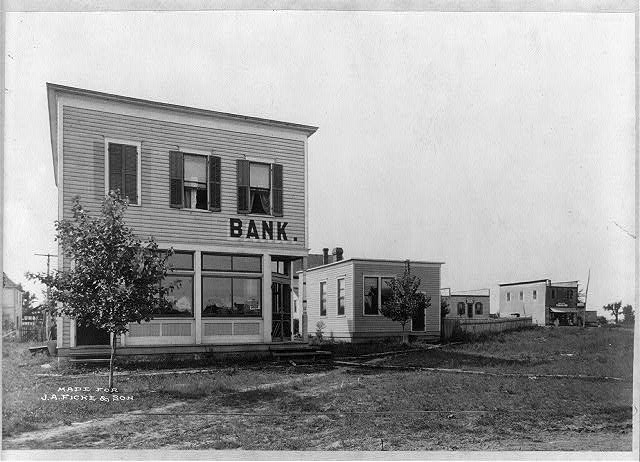The panic of 1929 had decimated the country’s confidence in the financial industry. Banks were steeped in conflicts of interest. They were underwriting a company’s securities and immediately after, shoving the same securities in an investor’s hands. Without disclosure. The public called for restriction and separation leading to the Banking Act of 1933 which was passed by Congress. Containing sections 16, 20, 21, and 32 commonly referenced as the Glass-Steagall Act.
Signed by President Franklin D. Roosevelt, in his Fireside Chat after he was elected, Franklin stated:
[T]he legislation promptly and patriotically passed by the Congress confirming my proclamation and broadening my powers…this law also gave authority to develop a program of rehabilitation of our banking facilities. I want to tell our citizens in every part of the Nation that the national Congress — Republicans and Democrats alike — showed by this action a devotion to public welfare and a realization of the emergency and the necessity for speed that it is difficult to match in our history….We had a bad banking situation. Some of our bankers had shown themselves either incompetent or dishonest in their handling of the people’s funds. They had used the money entrusted to them in speculations and unwise loans…it was the Government’s job to straighten out this situation and do it as quickly as possible — and the job is being performed.
March 12, 1933: Fireside Chat 1: On the Banking Crisis, President Franklin D. Roosevelt
Instead of speculative assets and securities, banks were heavily pushed towards safer alternatives. Small, rural banks loved the Act and were vocal in their support of it. The Act had the opposite effect on larger, institutional banks. From their view, all they’d be doing was supporting much smaller banks.
After it was passed, the ramifications rippled across the nation. Banks were required to separate their commercial and investment arms while having to decide if they’d become a commercial or investment institution within the year. Commercial banks could not underwrite or deal in securities and investment banks couldn’t have any close relationships with commercial banks. Including sharing directors or common ownership. For commercial banks, only 10% of their generated income could be derived from investments because of the exceptions for underwriting government-issued bonds.
A major achievement resulting from the Act was the Federal Deposit Insurance Corporation (FDIC). At the time of creation, the initial protection limit was $2,500 before being raised to $5,000 within the span of a six months. In the subsequent years, the limit would continue to increase until it reached today’s limit of $250,000 per depositor, per insured bank, for each account ownership category.
Although most had been in favor of the Act when it was signed by President Roosevelt– the opposite was true the following six decades. By 1999, discomfort had reached its peak. President William J. Clinton repealed large portions of the Act due to his passing of the Gramm-Leach-Bliley Act (GLBA).
The argument, successfully made, was financial integration was alive and well. Therefore continuing to separate commercial from investment banking was not favorable to the companies and their clientele. To ensure protection for the average consumer, new rules and regulations were created. The Federal Reserve was given functional regulatory authority. The regulation responsibility relied on the reports and supervision from the appropriate and applicable regulatory agencies such as the Securities and Exchange Commission (SEC) and state insurance agencies.
Financial holding companies were created from the GLBA and were essentially an umbrella. The holding company would function as the umbrella while various subsidiaries providing different services were grouped below it. With the integration from the passing of GLBA, regulations were produced for FHCs preventing them from marketing securities in one subsidiary while underwriting them in another. When Clinton signed the Act, he stated:
This historic legislation will modernize our financial services laws, stimulating greater innovation and competition in the financial services industry…While the Act allows common ownership of banking, securities, and insurance firms, it still requires those activities to be conducted separately within an organization, subject to functional regulation and funding limitations.
Statement on Signing the Gramm-Leach-Bliley Act, November 12, 1999, President William J. Clinton
Today, Glass-Steagall’s main purpose, separation of commercial and investment banking, continues to be repealed. After the 2008 crash, headlines shouted, “New Glass-Steagall”, “Reinstating Glass-Steagall”, “Repeal of Glass-Steagall Caused the Financial Crisis”! But does it need to be reinstated? If so, how does it need to be altered to become applicable in this modern financial age?
Over 80 years later, an Act initially implemented in 1933 continues to dominate public awareness. Both the Republican and Democratic party campaigned for a revised Glass-Steagall during the 2016 presidential election. Leading with substantially different statements. With the GOP currently holding the majority in the House of Representatives and the Democratic party leading the Senate, it appears to be unlikely that any radical changes will be made surrounding Glass-Steagall and its repealer, the GLBA.

